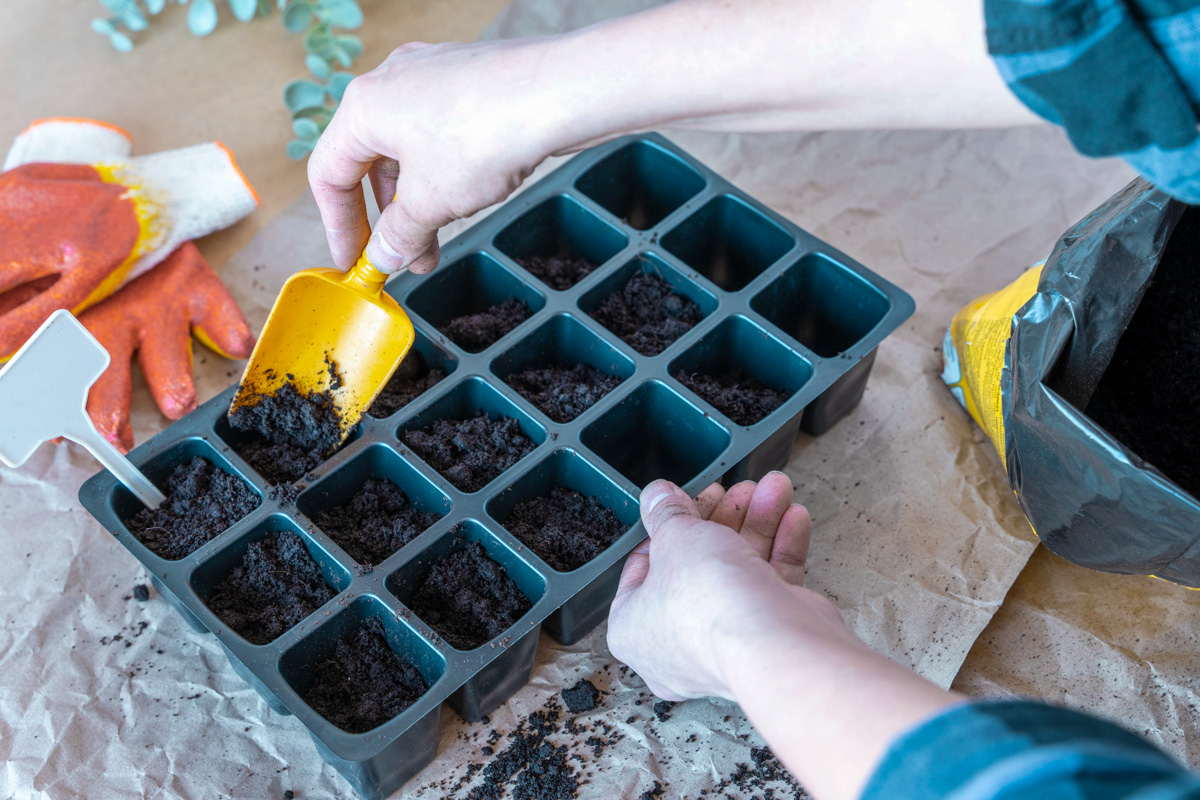
No Such Thing as a Green Thumb
By Joy Scott
Texas Master Gardener
A diy approach to growing your own transplants can be a rewarding experience for the home gardener. Cultivating the skill set of seed propagation can make it possible to grow varieties of plants that are usually not available through most retail sources. By selecting seeds appropriate for the area in which you live your plants are more likely to thrive and be productive.
There are many resources available, both in print and online, that offer a wealth of information on seed propagation for the home vegetable garden. This link to a video features an Aggie Horticultural Specialist offers some useful information about starting seeds for transplanting: https://www.youtube.com/watch?v=eKaM9prkkuY.
Another great source of information about growing vegetable transplants from seed can be found at: https://aggie-horticulture.tamu.edu/earthkind/landscape/starting-seedlings-at-home/.
With the cost of vegetable transplants for the garden trending upward, there is financial incentive to grow your own from seeds. The most important consideration in preparing for planting your own seeds indoors is to use clean, sterilized growing containers and commercial growing medium formulated for starting seeds. Any repurposed containers should be washed and sanitized by immersion in a 10% bleach/90% water solution. Seed starting mediums are usually made without soil and are lightweight and drain quickly. It is best practice to moisten the growing medium until it has the feel of a damp sponge. After the planting medium has the correct ratio of water, it can be placed in growing trays, pots or cells. The most important consideration is that growing containers have drainage holes. When planting seeds in growing medium, planting depth usually is about as deep as seed width. For pepper and tomato seeds this is usually one fourth of an inch. Keeping the growing medium moist, but not soggy is essential for seed germination. This is best accomplished by covering growing containers with a clear humidity dome or plastic. There are many ways to reuse common plastic food containers for this purpose. Once seeds start to emerge from the soil, it is important to uncover them.
Bottom heat can speed germination. Seedling heat mats the size of a typical nursery tray plug into any 110-volt receptacle and are available from nursery suppliers and online retailers. Pepper seeds respond well to bottom heat as they germinate best in temperatures of 80-90 degrees F. Grow lights also help produce healthier, stronger plants. 16 hours of light and 8 hours of dark is the best cycle for growing transplants.
Air circulation helps seedlings stay healthy and stimulates plants to grow stronger stems. Small desk, or personal fans are an option to promote air circulation through seedlings. A liquid fertilizer solution can help insure more rapid and healthy growth. A half strength mix is suggested the first time. Thereafter, increase the strength gradually as plants grow.
Seedlings do best if allowed to dry slightly between waterings. Roots need air access to develop properly. If the containers in which seedlings are growing are too small for adequate root expansion, the seedlings need to be transplanted into a larger pot. Bottom watering is a good way to allow roots to soak up needed moisture. By placing pots or cells of seedling plants into a larger tray that does not have drainage holes, it is easy to provide young plants with the right amount of moisture.
Before planting seedlings outdoors, they need to be conditioned to being outdoors and in direct sunlight. This practice, referred to as “hardening off” is best accomplished by gradually increasing the amount of outdoor sunlight each day for a week.
Growing your own vegetable garden transplants can be a rewarding experience. It allows you to grow the exact varieties of seed you want. Growing and nurturing vegetable seedlings allows one to experience the entire cycle of a plant’s life. Plus, there is potential for considerable savings when you compare the cost of purchasing plants to growing your own. And consider this quote from Sandia Seed Company, “To plant a seed is to believe in tomorrow.” Happy gardening!











